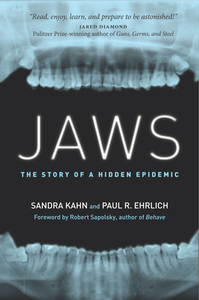Take a photo of a barcode or cover
informative
medium-paced
Like many others have noted, the flaws of this book seem to be a lack of research references, a noted fascination with “attractive” faces, a semi-shallow understanding of the many cultural / financial /emotional /etc. barriers to pursuing these alternative treatments or any medical support at all, and a lack of specificity of what qualifies as “not soft” foods that are appropriate to feed ourselves & children. Interesting and informative, but not as thorough or specific as it could be
informative
reflective
medium-paced
informative
slow-paced
Fascinating book regarding the evolution of jaws and the airway. Considering my 8 year old just had his tonsils and adenoids out at the urging of his orthodontist due to mouth breathing and snoring and his orthodontist is also discussing with us the pros of treatment in regards to his teeth AND his airway, I found the book fascinating. Every parent should read it when their children are young.
Could have been an interesting 20 page article. Hard to understand why it needed more pages.
I recently read Breath by James Nestor and it was one of the worst books I’ve read because it was full of BS, so I was nervous about this one. But Jaws was sooo much better! I did give it a lower rating because honestly it was so boring, and very repetitive (it could’ve been so much shorter). BUT! I approve of this book because it doesn’t entirely discredit western medicine practices like most “natural health” books do. It pays its dues to doctors/dentists where due, but also gives alternatives where they fit. Obviously this was an educational read and not so much about entertainment, however I had a hard time following along simply because it was so stale. But if you are interested in learning more about the effects of mouth breathing and the evolution of the human jaw, I feel this is a solid resource!
informative
informative
reflective
medium-paced
informative
slow-paced
